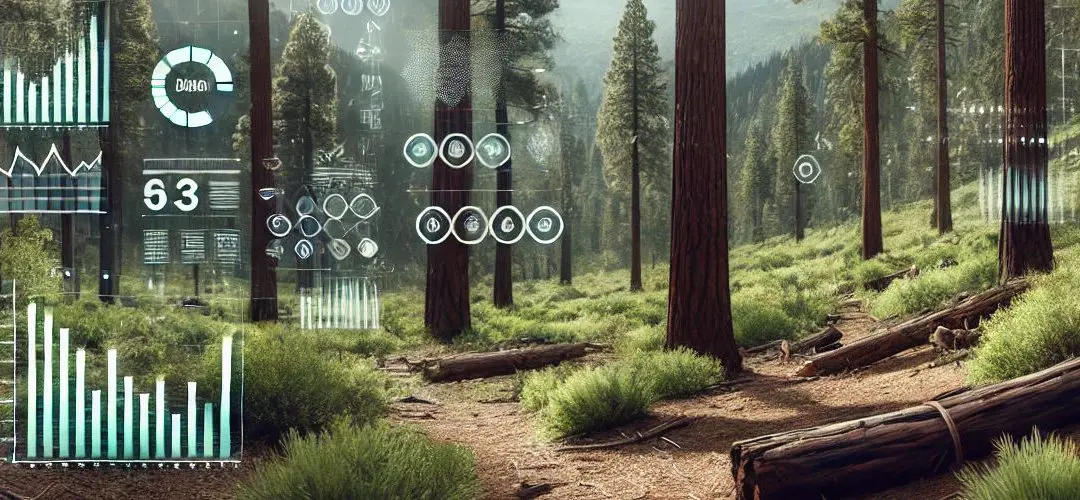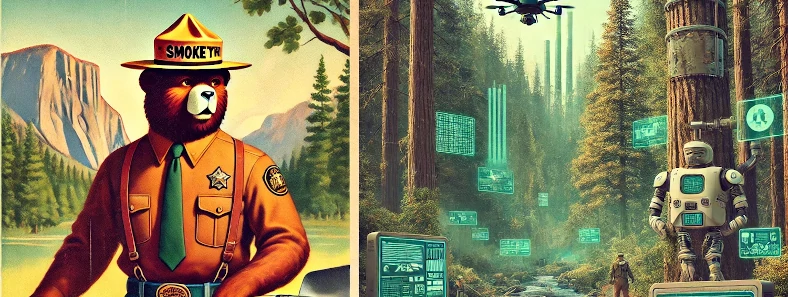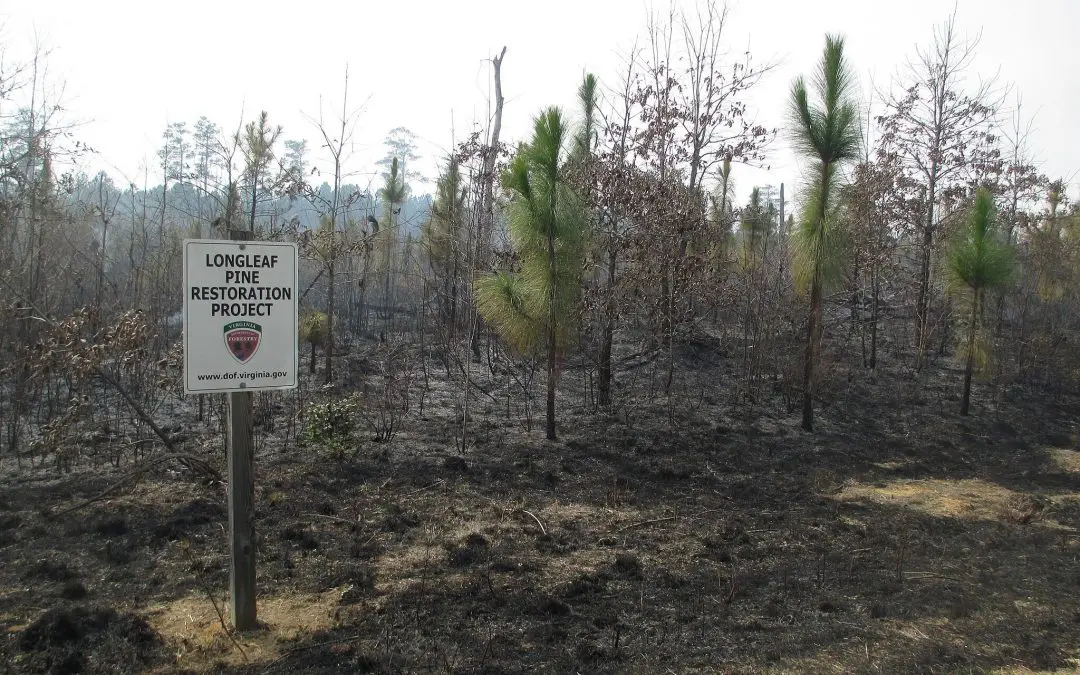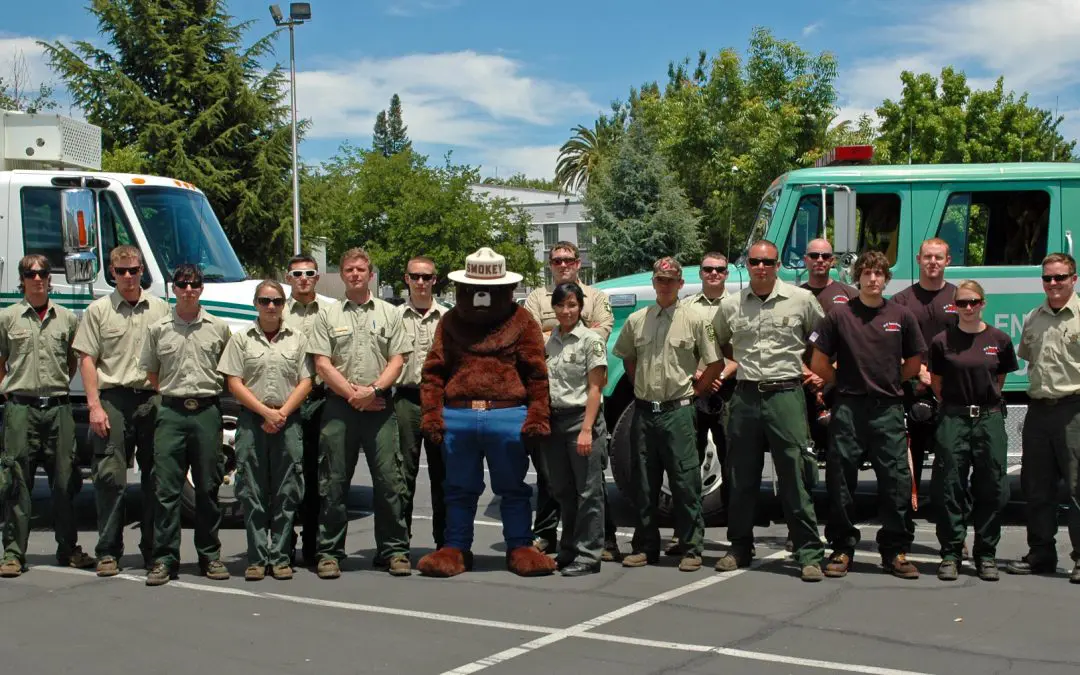
by Jim MacLennan | Discovery
When we think about the future of our planet, forests stand as both sentinels and solutions. As climate change accelerates and natural resources become increasingly strained, the role of Forestry is gaining unprecedented attention. But beyond traditional logging and conservation, a burgeoning frontier holds immense potential for entrepreneurs and investors: Forestry Innovation. This is not just about planting trees – it’s about reimagining the entire Forestry ecosystem with new tools, data, and strategies that drive value and sustainability.
Forestry has long been a crucial sector, quietly supporting industries from construction to pharmaceuticals. However, as the global focus shifts towards sustainability, the need for innovative approaches in Forestry is more urgent than ever. The United Nations’ Sustainable Development Goals (SDGs) highlight the critical role of forests in achieving a sustainable future. Forestry is directly linked to SDG 15 – Life on Land – which focuses on managing forests sustainably, combating desertification, halting and reversing land degradation, and halting biodiversity loss. But it doesn’t stop there. Innovations in forestry also tie to other SDGs, such as SDG 13 (Climate Action), SDG 8 (Decent Work and Economic Growth), and SDG 9 (Industry, Innovation, and Infrastructure).
In this first installment of our series, we’ll explore the intersection of technology, entrepreneurship, and Forestry. Over the next three articles, we’ll dive deeper into specific niches – Forest Restoration, Forest Economics, and Fire Management – each presenting unique opportunities for those ready to think differently and act boldly.
Forest Restoration: Rebuilding Our Natural Capital
Forest Restoration isn’t just about replanting trees – it’s about rebuilding ecosystems, restoring biodiversity, and revitalizing degraded land. Entrepreneurs are developing cutting-edge technologies like drone-assisted planting, AI-driven monitoring systems, and new methods for carbon sequestration. The potential for value creation is enormous, not only in terms of environmental impact but also in generating new revenue streams. Investors who recognize the long-term benefits of these innovations are positioned to lead in a market that blends profit with purpose.
Forest Economics: The Business of Sustainability
As we shift towards a green economy, the economics of Forestry are evolving rapidly. Forest Economics now encompasses sustainable timber production, carbon credits, and the valuation of ecosystem services. Data analytics and digital tools empower startups to optimize forest management, reduce waste, and tap into new financial models. By embracing these innovations, businesses can enhance their profitability and contribute to a more sustainable global economy.
Fire Management: Preventing the Next Crisis
Wildfires are one of the most pressing challenges in forestry today. Climate change has made fire seasons longer and more intense, leading to devastating impacts on forests and communities alike. However, innovation in Fire Management is opening new pathways for prevention and response. Startups are developing predictive analytics, satellite monitoring, and automated fire suppression technologies that could revolutionize how we manage wildfires. By investing in these technologies, entrepreneurs and investors can play a crucial role in safeguarding our forests and those who depend on them.
Forestry Innovation and Impact
The convergence of technology and forestry presents a rare opportunity to create profitable and impactful solutions. For entrepreneurs, this means bringing fresh ideas to an industry that has historically been slow to change. For investors, it means recognizing the potential for high returns in a sector essential to our planet’s future. As you explore these opportunities, consider the broader implications of your work – how it contributes to global sustainability goals, drives economic growth, and, ultimately, protects the natural world we all rely on.
Stay ahead of the curve in forestry innovation. Join our mailing list for the latest insights, share your thoughts in the comments, and keep an eye out for the next article in this series.

by Jim MacLennan | Discovery
Today marks a special milestone — Smokey Bear’s 80th birthday. For decades, Smokey has been a symbol of wildfire prevention, reminding us of our crucial role in protecting our forests. But as we celebrate his legacy, it’s also a time to reflect on how far we’ve come and how much further we still have to go, especially in a world where technology can unlock new avenues for conservation.
In recent years, my focus has shifted significantly. After a long career in applied digital technology, I’ve found myself diving headfirst into the world of Venture Capital, specifically within the forestry sector. My new mission is clear: leverage cutting-edge technology to drive impactful change in forest restoration, forest economics, and fire management. This isn’t just a professional pivot—it’s personal.
Embracing a New Purpose
If you’ve visited the About page on Talking Tree Ventures, you’ll know that this journey is deeply rooted in a desire to make the world a better place for my grandkids. The stakes couldn’t be higher; with climate change accelerating, the future of our forests—and, by extension, our planet—depends on the actions we take today. I’m committed to creating meaningful impact, not just in words but in actions.
That’s why I’m excited to announce a significant commitment: starting this year, 20% of all revenue generated by Talking Tree Ventures will be dedicated to impact investing and socially relevant causes. This isn’t just about making donations; it’s about funding the next generation of startups poised to revolutionize how we manage and protect our forests.
The Power of Technology in Forestry
Over the last few weeks, I’ve been writing extensively about the role of technology in forestry. Whether it’s drones replanting trees in fire-ravaged areas or data analytics optimizing timber production for sustainability, the innovations we’re seeing today are nothing short of extraordinary. And it’s not just about the tech—it’s about the stories of the people behind these innovations.
Every connection I make in this space opens up new possibilities. I’ve met entrepreneurs who are redefining what’s possible in forest restoration, investors who are eager to support this vision, and researchers whose work is laying the groundwork for the future of forestry. It’s like drinking from a fire hose—in the best possible way.
Why This Matters—And How You Can Get Involved
I don’t want to undertake this journey alone. There’s too much at stake and too much to learn. I’m looking for partners—startups developing groundbreaking solutions, angel investors who can provide guidance and capital, and anyone with a passion for preserving our forests for future generations.
Let’s make this a collective effort. If you have a story about how forests have impacted your life, I want to hear it. If you’re a startup with a bold new idea, I want to help you bring it to life. And if you’re an investor looking to make a difference, let’s talk about how to work together to achieve our shared goals.
What’s Next for Talking Tree Ventures
As we celebrate Smokey’s 80th, I’m reminded of the power of a single idea to change the world. Smokey’s message has been ingrained in our collective consciousness for generations. It’s time to build on that legacy with new tools and ideas.
In the coming weeks, I’ll share more about the long-term vision for Talking Tree Ventures, including plans for a dedicated investment fund focused on applied technology in forestry. While I’m still gathering insights and researching the best path forward, I’m more determined than ever to make this vision a reality.
Ready to make a difference? Join our mailing list, share your thoughts in the comments, and stay tuned for more exciting updates from Talking Tree Ventures.

by Jim MacLennan | Discovery
As we look towards the future, the intersection of forest economics and technology becomes not just a point of curiosity but a critical focal point for the forestry industry. Entrepreneurs and investors, driven by the mission of Talking Tree Ventures, understand that the future of sustainable forestry hinges on the intelligent application of technology. From advanced data analytics to AI-driven forest management, the digital revolution is bringing unprecedented changes to how we understand and interact with our forests.
The integration of technology into forest economics isn’t just about efficiency; it’s about survival. The growing threats of climate change and deforestation demand innovative solutions that can adapt to rapidly changing environmental conditions. With technology, we can optimize forest restoration efforts, manage forest fires more effectively, and ensure that economic models are sustainable for the long term. The stakes are high, and the opportunities are vast.
A Historical Perspective on Forestry Technology
The forestry industry has a rich history of innovation, from the development of early logging techniques to the modern machinery we see today. But now, we’re at a tipping point. The emergence of precision forestry—leveraging satellites, drones, and sensors—is revolutionizing the way we manage forests. These tools provide real-time data, allowing for more precise and informed decision-making. This technological leap forward is not just about enhancing productivity; it’s about making forestry more resilient, adaptive, and sustainable.
Talking Tree Ventures: Leading the Charge
Talking Tree Ventures is deeply invested in this technological transformation. By supporting startups and early-stage innovators, we’re not just participating in the future of forestry—we’re shaping it. Our mission is to bring together the brightest minds in tech and forestry to create solutions that will protect our forests for generations to come.
We want to hear from you! How do you see technology transforming the forestry industry? What innovations excite you the most? Share your thoughts in the comments, and don’t forget to join our mailing list for more updates.
And speaking of innovation, stay tuned for an exciting announcement from Talking Tree Ventures as we celebrate Smokey Bear’s 80th birthday. Something big is on the horizon!
Don’t miss out on the latest in forestry innovation! Join our mailing list, share your thoughts in the comments, and stay tuned for more updates. Together, we can build a more sustainable future for our forests.

by Jim MacLennan | Discovery
When Smokey Bear first told us, “Only YOU can prevent forest fires,” he became an enduring symbol of fire prevention. But as we enter a new era of forest management, Smokey’s message has evolved to emphasize not just fire prevention, but forest restoration – bringing back the health and vitality of our forests for future generations. This shift is crucial for entrepreneurs and investors in the forestry sector, particularly those focused on forest restoration, economics, and fire management.
From Fire Prevention to Forest Restoration
In the mid-20th century, Smokey the Bear emerged as the face of wildfire prevention, a response to the widespread forest fires that ravaged the United States. His message was simple: human carelessness was the leading cause of wildfires, and by being vigilant, we could protect our forests. For decades, this was the focus, and it worked—wildfire occurrences due to human error have decreased significantly.
However, as we’ve learned more about the ecology of forests, the narrative has shifted. Today, we understand that fire plays a natural and necessary role in many ecosystems. Fire can clear out underbrush, return nutrients to the soil, and create the conditions necessary for certain species to thrive. But with the advent of climate change, the intensity and frequency of wildfires have escalated, demanding a more nuanced approach.
This is where forest restoration comes into play. The modern forestry industry recognizes that it’s not just about preventing fires but ensuring that forests are resilient and capable of regenerating after disturbances, whether they be fires, storms, or human activities. Entrepreneurs and investors in this space are increasingly focusing on innovations that support this regenerative approach—from advanced reforestation techniques to economic models that value the long-term sustainability of forest ecosystems.
Why This Matters
- Restoration Over Suppression: Modern forestry practices embrace the natural role of fire in ecosystems while focusing on restoring forests to enhance their resilience and health.
- Economic Sustainability: Innovative economic models that value forest restoration ensure long-term profitability while maintaining ecological balance.
- Fire Management Evolution: Advanced technologies and methodologies are transforming fire management, emphasizing prevention, mitigation, and post-fire restoration.
As Smokey celebrates his 80th birthday, we honor his legacy by expanding his mission—from preventing fires to regenerating forests. Stay tuned for an exciting announcement from Talking Tree Ventures that will align with this evolved mission.
Join our mailing list to stay informed about innovations in forest restoration, share your thoughts in the comments. Keep an eye out for more updates from Talking Tree Ventures!

by Jim MacLennan | Discovery
When you think of wildfire prevention, the first image that probably comes to mind is Smokey Bear, the gentle giant who has reminded us for nearly eight decades that “Only YOU can prevent forest fires.” But Smokey’s story is more than just a catchy slogan – it reflects how our approach to wildfire prevention has changed over time, and how it continues to evolve today.
Smokey Bear debuted in 1944, in the thick of World War II. Back then, with many firefighters overseas, the U.S. Forest Service needed a way to prevent accidental fires from decimating critical timber resources at home. Enter Smokey, with his stern yet caring message aimed at an audience of everyday Americans. The idea was simple: by raising awareness, we could reduce the number of human-caused fires. And it worked – sort of.
For years, Smokey’s message was drilled into our collective consciousness, contributing to a significant reduction in wildfires caused by carelessness. However, as our understanding of forest ecosystems deepened, we realized that not all fires are bad. Many ecosystems depend on periodic fires to renew themselves, clearing out underbrush and making way for new growth.
Smokey’s blanket message of “no fire is good fire” started to seem outdated. Fast forward to today, and Smokey Bear’s message has undergone a transformation. It’s no longer about preventing all fires but about preventing the wrong kinds of fires—those sparked by human negligence. It’s about understanding the role of fire in forest health and learning to live with it, rather than trying to eliminate it entirely.
This evolution in messaging reflects a broader shift in how we think about forest management. It’s not just about putting out fires; it’s about managing forests in a way that makes them more resilient to fires when they do happen. This means thinning overly dense forests, conducting controlled burns, and educating the public on how to enjoy the outdoors responsibly.
As Smokey Bear approaches his 80th birthday, his legacy is more relevant than ever. With climate change driving more extreme weather and longer fire seasons, the need for effective wildfire prevention and forest management has never been greater. But it’s also clear that the solutions of the past won’t be enough to tackle the challenges of the future.
So, here’s to Smokey Bear — icon, educator, and enduring symbol of our commitment to protecting the forests we all depend on. And here’s to the future, where we’re not just preventing fires, but creating healthier, more resilient forests for generations.
And remember … in celebration of Smokey’s 80th birthday, we are introducing something new at Talking Tree Ventures – so stay tuned for more hints during the week, as we build towards Friday August 9 – Smokey’s big day!
We’d love to hear your thoughts on how Smokey Bear has influenced your views on wildfire prevention and forest management. Join the conversation in the comments below!





